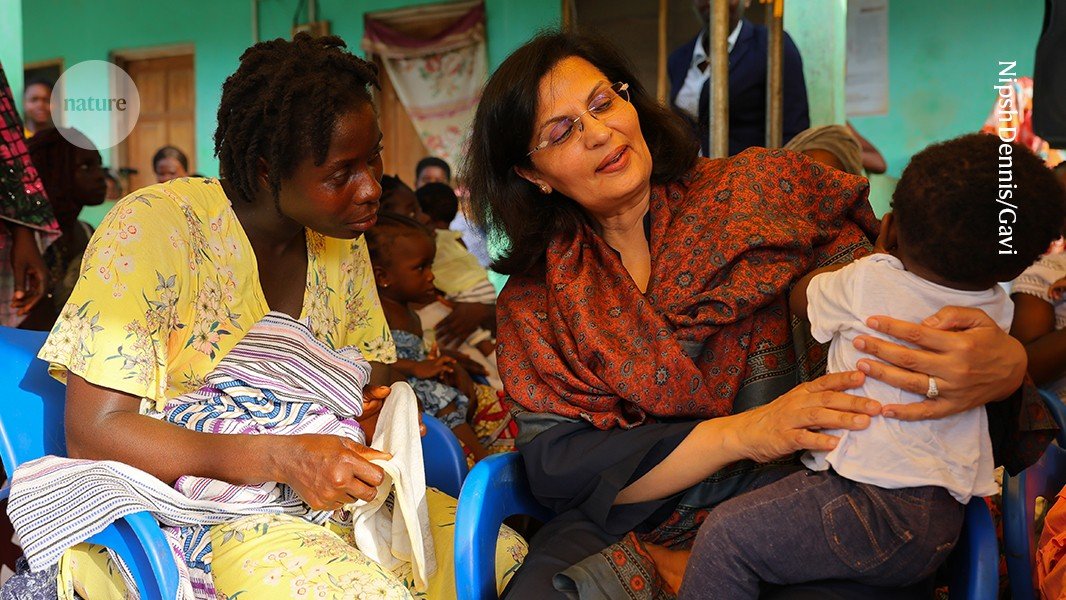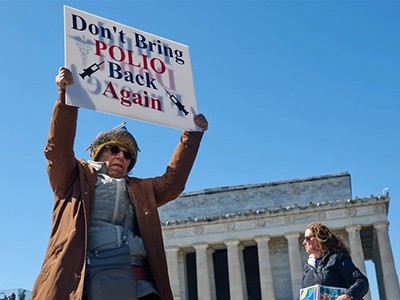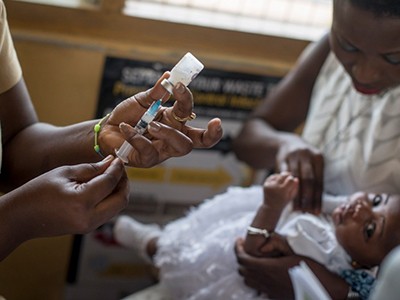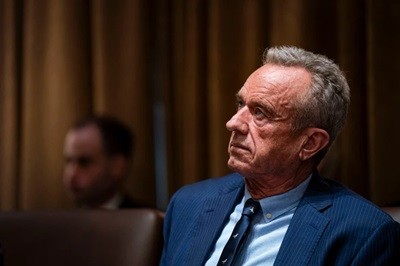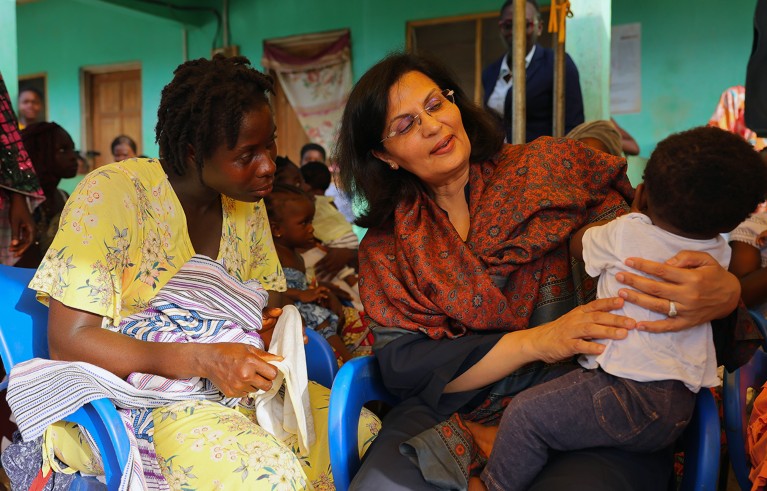
Gavi chief executive Sania Nishtar (pictured here in Ghana) is urging donors not to put children in harm’s way.Credit: Nipsh Dennis/Gavi
This year was never going to be easy for Gavi, the Vaccine Alliance, the global-health organization that has vaccinated more than one billion children against diseases such as polio, diphtheria, measles and Ebola. As the organization, based in Geneva, Switzerland, celebrates its 25th birthday — and the nearly 19 million lives that its inoculations have saved during its time — it finds itself US$3 billion short of its $12-billion target budget for 2026–30.
If the shortfall cannot be filled, Gavi will need to cut lifesaving programmes, and the world will probably see a resurgence of disease, illness and avoidable deaths. “For every $1.5 billion less, your ability to save 1.1 million lives is compromised,” Gavi chief executive Sania Nishtar told Nature. “That’s a lot of children put in harm’s way.”
Vaccines save lives. Leaders must champion them
At the start of the year, Gavi’s public and private donors were already stretched by competing needs, owing to factors from economic instability to armed conflict and climate change. But fears mounted in March, when news broke that the United States, one of its biggest donors, would abandon a previous pledge of at least $1.58 billion. This was confirmed at a 25 June summit of donors in Brussels, where US health secretary Robert F. Kennedy Jr, who has long campaigned against some vaccines, criticized the organization for not taking vaccine safety seriously.
Gavi’s leadership quickly issued a statement identifying misrepresentations in Kennedy’s words and clarifying that it does not distribute vaccines unless they have been recommended by the independent vaccine advisory panel of the World Health Organization (WHO), which evaluates safety and efficacy “through a rigorous, transparent and independent process”.
Even without the US withdrawal, Gavi was $1.5 billion off target. Now, it must find around twice that. Gavi’s board is meeting this week to sift through its options. There is some good news: Gavi has more donors now than in past years, and some have said that they can contribute at a later time. Moreover, some manufacturers have agreed to lower the cost of their vaccines for Gavi.
Scientists hail historic malaria vaccine approval — but point to challenges ahead
However, in the short term, global-health advocates will now need to find creative ways to pool their resources, coordinate efforts and continue to invest in innovation to squeeze the most they can from limited funds. Gavi, the Coalition for Epidemic Preparedness Innovations (CEPI) and their many global-health partners will have to coordinate carefully to ensure low- and middle-income countries receive the vaccines they need. “Organizations like mine are going to be put through our paces and tested in a way that we haven’t been tested before,” says Aurélia Nguyen, deputy chief executive of CEPI, based in Oslo, which works to accelerates the development of vaccines against emerging infectious diseases.
In the chaos left behind by the US plan to withdraw from the WHO and other global-health programmes, it could be tempting to focus on existing funding priorities. But there is also a pipeline of new and upcoming vaccines that could save yet more lives. In 2021, the WHO recommended the first vaccine against malaria, which is now being rolled out to millions of young children in 20 African countries. Governments are clamouring for doses — malaria kills roughly 600,000 people every year. Hopes are also high that an experimental tuberculosis vaccine, now in late-stage clinical trials, could help to combat one of the world’s most deadly diseases. Tuberculosis kills more than one million people a year globally.
Now is not the time to take the foot off the accelerator on such innovations — which is another reason more coordination and cooperation is needed. Declining vaccination rates in poor countries not only put the lives of vulnerable people — especially children — at risk from infectious disease, but can also raise the danger of disease outbreaks around the world.
Will RFK Jr’s vaccine agenda make America contagious again?
The rapid response to a 2024 Marburg virus outbreak in Rwanda, with only ten days between the declaration of an outbreak and the first vaccination (C. T. Nutt N. Engl. J. Med. 392, 625–627; 2025), stands as a positive example of what can be achieved when countries have the resources and preparation to coordinate and therefore respond aggressively. That outbreak — one of the largest ever of Marburg virus — was quenched by the Rwandan health authorities in less than three months. If the response had not been so swift, the outbreak could have spread farther, taken more lives and drained more resources.
Gavi will continue to search for places to cut costs. At the same time, some African countries, which themselves have contributed more than $1 billion to Gavi since 2008, are exploring how their health-care systems will need to adapt to this financial climate, according to Jean Kaseya, director-general of the Africa Centres for Disease Control and Prevention, based in Addis Ababa.
But because only 3% of Gavi’s budget goes to administrative costs, a relatively low figure compared with other charities, that leaves little to cut before important programmes are under threat. More funds will be needed, so there is an opportunity for donors to step forward to fill the gap, Nishtar says. “We’re preparing for all scenarios, because that’s the responsible thing to do,” she says. “But we have every reason to hope for a very positive future.”
If donors care about the health and well-being of present and future generations, the responsible thing will be not to settle for a worst-case scenario, but to provide Gavi with what it needs. “For us, Gavi is a game changer,” Kaseya says.

